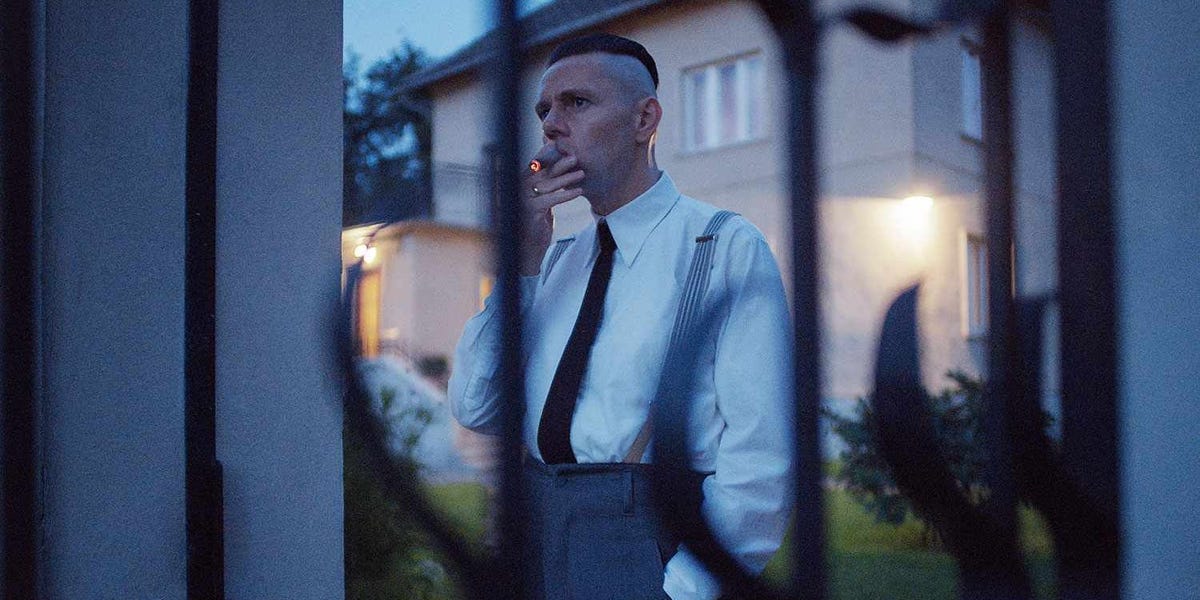This column by Mathias Döpfner, the CEO of Business Insider’s parent company, Axel Springer, originally appeared in WELT, another Axel Springer publication. A translated version appears below. The views expressed are his own.
My weekend in Cannes was supposed to be carefree: Two days, some rosé in the spring sun on the Croisette, the awards ceremony of the film festival, which awards the globally coveted Palme d’Or.
The movies were also supposed to be as cheerful as my weekend. As cheerful as the first scene of the oddly named film “The Zone of Interest” — based on the novel of the same name by Martin Amis, who died on the day of the film’s premiere in Cannes. A picnic by the river. Light green leaves on the bank, silvery flickers the surface of the water. Whooping fills the air. A family outing by bike, children playing and swimming, happy parents. An early summer dream. The Höss family on summer vacation. An abyss.
But that cheerful illusion did not last. The images and sounds from A24’s “Zone of Interest,” which has earned a little over $24 million at the global box office, have haunted me since that weekend. It is the first film to show precisely how the Holocaust was possible. It is the most unusual — and I believe best — Holocaust film made to date. And I am beginning to understand something I never understood before.
Unlike most Holocaust films, Jonathan Glazer, the director of “The Zone of Interest,” tells the story from the perpetrators’ — and thus the murderers’ — perspective. More precisely, he tells the story of Rudolf Höss, the camp commander of Auschwitz, one of the worst criminals of National Socialism.
‘Zone of Interest’ perfectly captures a life with no love
A still from “The Zone of Interest.”
A24
Glazer’s film takes place in the commandant’s villa, which was modern in the ’40s: right angles, sober gray plaster. The house (still) stands directly at the wall of the camp. Behind it, the incinerators are smoking nonstop. Behind the wall begins the realm of death, where more than a million people were murdered until the camp was liberated in January 1945.
To make the concrete wall look less brutal and more likable, Hedwig Höss, the commander’s wife, planted vines in front of it. The garden was all her pride and joy, her “paradise garden” — lovingly planted with perennials, fruit trees, flowerbeds, vegetable beds, and a square pool with a slide for the children. A perfect world, there, at home, in the villa directly at the wall of the Auschwitz main camp, part of the largest mass-extermination camp of all time. This is where Rudolf and Hedwig Höss lived since 1940 together with their growing family of five children.
In another early scene from the film, it’s Rudolf Höss’ (Christian Friedel) birthday. His wife (Sandra Hüller) got him a rowing boat. Even this early scene contains the essence of this film. The father of the family is alienated by the emotion of the moment; he puts one of his children in the boat as if it were a photo session for the “Völkischer Beobachter.” He and the whole family, uptight and ultimately loveless, pretend to be happy. Pure coldness. It is the absence of love that explains everything.
The couple’s bed scenes also struck me in their particularity. The Hösses sleep in one room but separately. Their slippers in front of either single bed. No sex. No love. Rudolf racking his brain before falling asleep. Hedwig so frustrated she’s hysterically laughing. The absence of love as a prerequisite for mass murder.
In the film, violence isn’t spoken. It’s whispered.
A24
Jonathan Glazer produced this film within 50 days, re-creating the Höss home bit by bit. Ten cameras were installed in the house and remotely controlled by the director’s team. This allowed the actors to move around it as if it were everyday life.
One day, the “chief incinerator engineer,” Kurt Prüfer, and his supervisor, Fritz Sander, from the Topf and Sons company in Erfurt, meet with Höss. They have developed a new technology for crematoria. Twenty-four-hour operation. More efficient than anything before. Höss is enthusiastic. The language is reminiscent of the Wannsee Conference. Cold. Inauthentic. Euphemistic. There are no murdered people. There is only “cargo” that is “loaded.”
Shortly after the meeting, the Höss family once again goes swimming in the river. The father is fishing in the water and suddenly has skeleton parts in his hand. And ashes on his skin. A mishap. Everyone quickly goes home to wash the “Jewish dirt” off.
Höss occasionally orders a female camp prisoner to the office for sex. The real-life model for this scene is Höss’ relationship with Nora Mattaliano-Hodys, an Auschwitz prisoner who was impregnated by Höss, placed in solitary confinement, and forced to have an abortion. In the film, after coitus, Höss runs through bunker-like corridors to a washroom to cleanse himself of “shame.” Anxiously, he rubs his genitals with the disinfected washcloth. A scene of particular disgust.
The provocative thing about this film is its coldness. Sober as a scientist, Glazer observes the events in the “paradise garden” at the gateway to hell. Here, the sunflowers are blooming. There, beyond the wall, the chimneys glow.
One day, Hedwig Höss’ mother comes to visit. The daughter proudly shows her around the garden, explaining the plants, lamenting how hard Rudolf has to work every day, and raving about how beautiful life is here. Beaming proudly, she says, “They call me the Queen of Auschwitz.”
The blossoms of the flowers in the garden of the Höss family are continuously covered in the gray ash from the crematoria’s chimneys. The parents and the children have gotten used to it. They don’t know it any other way. At some point, the mother-in-law can’t take it anymore and secretly leaves without saying goodbye.
The ideal world in front of the wall to inferno is shaken only when Rudolf Höss is transferred to Berlin. Hedwig does not like this at all. She does not want to give up Auschwitz and her carefree life there. Höss manages to get his family to stay. The house is kept in good order. And Höss himself is ordered back to the camp after barely six months.
‘Zone of Interest’ created a soundtrack of horror
A24
More important than the images of the film are its sounds. Mica Levi, the composer of the film’s score, has written a dystopian melody of apocalypse. The soundtrack creates a horror soundscape that depicts the apocalyptic genocidal exposure of the decent German family. The constant cry of a baby is the primary sound of the family and also the symbol of constant irritation. From beyond the wall, the screams, the barking dogs, the frightened children’s voices resound. As well as the blunt, short sound of gunfire, over and over again. While Frau Höss strolls through the flower garden with her mother and smells the sun-eyed shrubs, over there — bang — another one has died.
The genius of the film also lies in the fact that it never shows the horror. We know the images. While we hear the sounds of murder, they form in our imagination. More cruel than any image shown in the cinema before. The violence is repressed, marginalized, and thus made possible. “The Zone of Interest” reminds us of this like a disturbing premonition.
Is there nothing good in Höss’ respectable house of horror? Not inside. But outside. At night, a Polish girl steals apples and pears from the Höss garden and secretly distributes them to where the slave laborers have to work the next day. The sequences are filmed using military thermal camera technology — a jarring visual that sets the compassionate act off from the rest of the film. A desperate gesture of humanity in this atrocity. But the shooting and gassing continues. Not in pictures but in the sounds that waft over the wall.
With Höss, everything continues to be cold and uncharitable. The everyday life of the “banality of evil.” It is what Hannah Arendt described in her book about the Eichmann trial. “The Zone of Interest” has given this thought its cinematic expression.
In the end, we spectators are too close. We begin to live in the Höss house. We start to become members of the Höss family. At the Holocaust Memorial Museum in Washington, you get the identity card of a Jew when you enter the permanent exhibition. You take the perspective of the victims. In Glazer’s film, it’s the opposite. One comes disgustingly close to the role of the passive perpetrator.
At the very end, only revulsion remains. Rudolf Höss runs down the stairs of a large building. And starts to vomit. He has to throw up out of disgust with himself. The scenes of his physical revulsion are intercut with modern-day images from the Auschwitz memorial, the cleaners arrive with vacuum cleaners and clean the display cases with the children’s shoes. In the camp, the chimneys smoke. In the garden, the flowers are blooming.
Can a film be that cold? It has to. The murderers were even colder.


